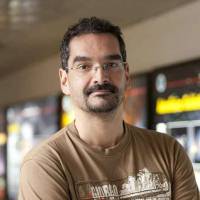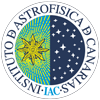Ignacio Trujillo Cabrera

Dates of the visit: 13/10/2012 to 15/12/2012.![]()
Research line: Formation and Evolution of Galaxies
Institution visited: Royal Observatory of Edinburgh (United Kingdom)
Dr. Trujillo collaborated with Dr. James Dunlop at the ROE in the discovery and characterization of stellar halos in distant galaxies. The results were published in Monthly Notices of the Royal Astronomical Society.
Currently Dr. Trujillo is a staff researcher at the IAC.
Using the privilege access of the astronomers of the Royal Observatory of Edinburgh to the deepest ever view of the Universe, the Hubble Ultra Deep field, we planned the visit to start a pioneer study of the stellar halos of the galaxies in the distant Universe. The stellar halos are the signatures of the assembly of the galaxies through the cannibalism of other small satellites. We selected two galaxies like our own Milky Way at redshift around 1. We find that the structural properties of those haloes (size and shape) are similar to the ones found in the local Universe. However, these high-z stellar haloes are approximately three magnitudes brighter and exhibit bluer colours ((g - r) ≲ 0.3 mag) than their local counterparts. The stellar populations of z ˜ 1 stellar haloes are compatible with having ages ≲1 Gyr. This implies that the stars in those haloes were formed basically at 1 < z < 2. This result matches very well the theoretical predictions that locate most of the formation of the stellar haloes at those early epochs. A pure passive evolutionary scenario, where the stellar populations of our high-z haloes simply fade to match the stellar halo properties found in the local universe, is consistent with our data.


